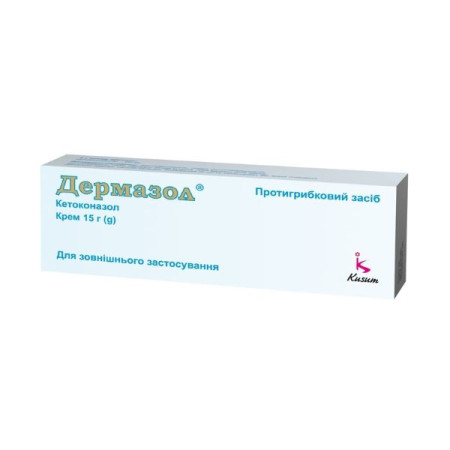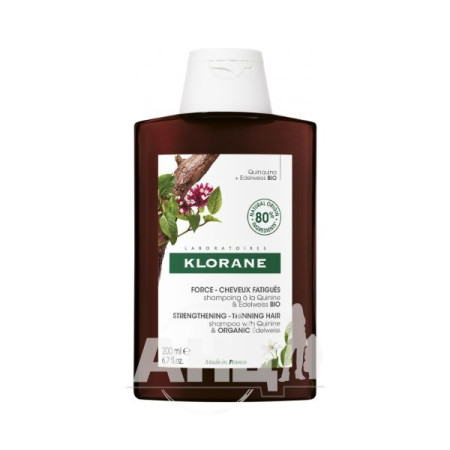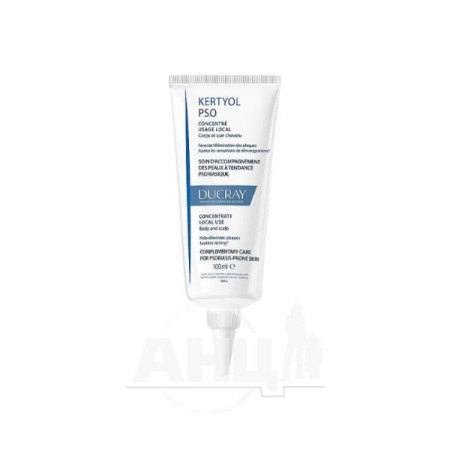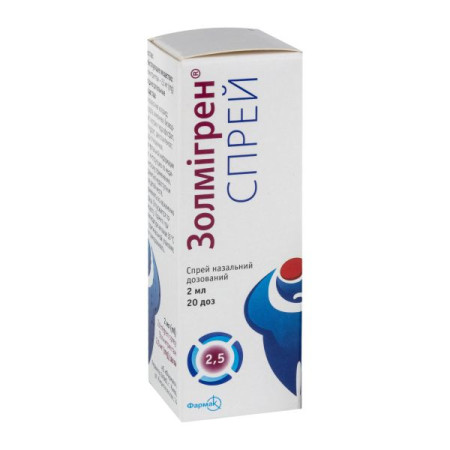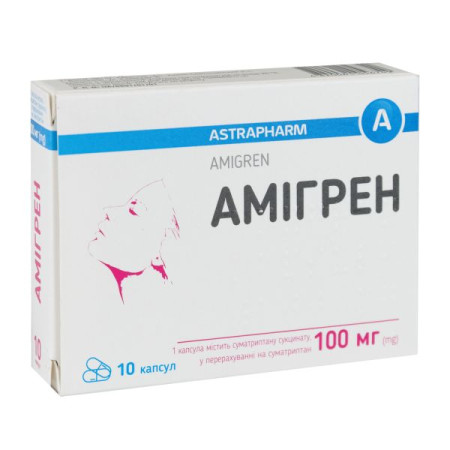Inflamin rectal suppositories 0.015 g blister No. 10

Instructions Inflamin rectal suppositories 0.015 g blister No. 10
Composition
active ingredient: meloxicam;
1 suppository contains meloxicam 15 mg;
excipient: solid fat.
Dosage form
Rectal suppositories.
Main physicochemical properties: suppositories of light yellow color with a greenish tint, spherical shape. The presence of a coating on the surface of the suppository is allowed.
Pharmacotherapeutic group
Nonsteroidal anti-inflammatory and antirheumatic drugs. ATX code M01A C06.
Pharmacological properties
Pharmacodynamics
Inflamin is a nonsteroidal anti-inflammatory drug of the enolic acid class, which has anti-inflammatory, analgesic and antipyretic effects. Inflamin has high anti-inflammatory activity in all standard models of inflammation. The general mechanism of these effects may be the ability of Inflamin to inhibit the biosynthesis of prostaglandins - mediators of inflammation.
The safer mechanism of action of Inflamin is associated with selective inhibition of cyclooxygenase-2 (COX-2) compared to cyclooxygenase-1 (COX-1). The therapeutic effect of NSAIDs is associated with inhibition of COX-2 synthesis, while inhibition of COX-1 leads to side effects from the stomach and kidneys.
The selectivity of meloxicam for COX-2 inhibition has been demonstrated by many investigators both in vitro and ex vivo. Inflamin (15 mg) preferentially inhibits COX-2 ex vivo, as evidenced by a greater inhibition of PGE2 production in response to lipopolysaccharide stimulation compared with thromboxane production in clotted blood (COX-1). These effects are dose-dependent. Inflamin has no effect on platelet aggregation or bleeding time at recommended doses ex vivo, whereas indomethacin, diclofenac, ibuprofen, and naproxen significantly inhibit platelet aggregation and prolong bleeding.
Clinical studies have shown a low incidence of gastrointestinal adverse events (perforations, ulceration and bleeding) when using recommended doses of meloxicam compared to standard doses of other NSAIDs.
Pharmacokinetics
Meloxicam is well absorbed from the gastrointestinal tract, which is reflected in its high absolute bioavailability (89%).
Bioequivalence of suppositories to capsules has been demonstrated. When using a single suppository, the maximum concentration of meloxicam in the blood plasma is reached after 5-6 hours.
Stable concentrations are reached on the 3rd-5th day.
A single daily dose results in a plasma concentration of the drug with relatively small fluctuations between its peak and trough within the range of 0.8-2 μg/ml for a dosage of 15 mg (Сmin and Cmax at stable equilibrium concentration).
The maximum stable equilibrium concentration in blood plasma after the use of suppositories is reached after approximately 5 hours.
Continuous treatment for a long period (e.g. 6 months) did not result in changes in pharmacokinetic parameters compared to those after 2 weeks of meloxicam 15 mg/day. Any changes are also unlikely with treatment durations longer than 6 months.
Distribution: In plasma, more than 99% is bound to plasma proteins (mainly albumin). Meloxicam penetrates into the synovial fluid at a concentration approximately half that in plasma.
The volume of distribution is low, averaging 11 liters. Individual variations are 30-40%.
Biotransformation. Meloxicam undergoes extensive biotransformation in the liver. Meloxicam is almost completely metabolized to four pharmacologically inert metabolites. The main metabolite, 5'-carboxymeloxicam (60% of the dose), is formed by oxidation of the intermediate metabolite 5'-hydroxymethylmeloxicam, which is also excreted to a lesser extent (9% of the dose). In vitro studies suggest that CYP2C9 plays an important role in the metabolism process, while CYP3A4 isoenzymes contribute to a lesser extent. Peroxidase activity in patients is probably responsible for the other two metabolites, which account for 16% and 4% of the administered dose, respectively.
Elimination: Meloxicam is excreted, mainly as metabolites, in equal amounts in the urine and faeces. Less than 5% of the daily dose is excreted unchanged in the faeces, while only traces of unchanged compound are excreted in the urine. The elimination half-life is approximately 20 hours.
Plasma clearance is 8 ml/min.
Special categories of patients.
Hepatic and renal insufficiency. Hepatic or renal insufficiency do not significantly affect the pharmacokinetics of meloxicam. In end-stage renal failure, an increase in the volume of distribution may lead to an increase in the concentration of free meloxicam.
Elderly patients: Mean plasma clearance at steady state was slightly lower in elderly subjects than in young subjects.
Indication
Symptomatic treatment:
pain syndrome in osteoarthritis (arthrosis, degenerative joint diseases); rheumatoid arthritis; ankylosing spondylitis.
Contraindication
Known hypersensitivity to meloxicam or to any of the other ingredients of the drug.
Also contraindications are:
Active or recent gastrointestinal ulcer/perforation; Active inflammatory bowel disease (Crohn's disease or ulcerative colitis); Severe hepatic impairment; Severe renal impairment without dialysis; Overt gastrointestinal bleeding, recent cerebrovascular bleeding or systemic coagulation disorders; Severe uncontrolled heart failure; History of proctitis and rectal bleeding.
Inflamin is contraindicated for use as an analgesic in the postoperative period of coronary artery bypass grafting.
Interaction with other medicinal products and other types of interactions
Other prostaglandin synthetase inhibitors, including glucocorticoids and salicylates (acetylsalicylic acid): the concomitant administration of prostaglandin synthetase inhibitors due to synergistic effects may lead to an increased risk of bleeding and ulcers in the digestive tract, therefore such combined treatment is not recommended. Inflamin is not recommended for use with other non-steroidal anti-inflammatory drugs.
Oral anticoagulants, antiplatelet agents, systemic heparin, thrombolytic agents, and selective serotonin reuptake inhibitors: increased risk of bleeding due to inhibition of platelet function. If such combined treatment is necessary, close monitoring is recommended.
Lithium: There are data on NSAIDs increasing the level of lithium in the blood plasma. It is recommended to monitor the content of lithium in the blood plasma at the beginning of treatment, when adjusting the dose and when stopping treatment with meloxicam.
Methotrexate: NSAIDs may reduce the tubular secretion of methotrexate, thereby increasing its plasma concentration. For this reason, concomitant use of NSAIDs is not recommended in patients receiving high doses of methotrexate (more than 15 mg/week). The risk of interaction between NSAIDs and methotrexate should also be considered in patients receiving low doses of methotrexate, in particular in patients with impaired renal function. If combined treatment is necessary, blood count and renal function should be monitored. Caution should be exercised when NSAIDs and methotrexate are taken for three consecutive days, as the plasma level of methotrexate may increase and toxicity may be increased. Although the pharmacokinetics of methotrexate (15 mg/week) were not affected by concomitant treatment with meloxicam, it should be considered that the haematological toxicity of methotrexate may increase during treatment with NSAIDs.
Contraception: NSAIDs reduce the effectiveness of contraceptives.
Diuretics: treatment of dehydrated patients with NSAIDs is associated with a potential risk of acute renal failure, therefore, before starting treatment, renal function should be monitored, and subsequently, with the simultaneous use of meloxicam and diuretics, patients should receive an adequate amount of fluid.
Antihypertensive drugs (e.g. beta-blockers, ACE inhibitors, vasodilators, diuretics): NSAIDs reduce the antihypertensive effect, which is associated with an inhibitory effect on vasodilatory prostaglandins.
NSAIDs and angiotensin-II receptor antagonists, as well as ACE inhibitors, have a synergistic effect on reducing glomerular filtration. In patients with pre-existing renal impairment, this may lead to acute renal failure.
Cholestyramine binds meloxicam in the gastrointestinal tract, leading to its rapid elimination.
NSAIDs may enhance the nephrotoxicity of cyclosporine through effects on renal prostaglandins, requiring close monitoring of renal function during concomitant use.
Meloxicam is almost completely destroyed by hepatic metabolism, approximately two-thirds of which occurs via cytochrome (CYP) P450-mediated metabolism and one-third via peroxidase oxidation.
Pharmacokinetic interactions between meloxicam and other drugs at the metabolic stage are possible due to their effects on CYP 2C9 and/or CYP 3A4.
No interactions of meloxicam with antacids, cimetidine, digoxin and furosemide have been identified when taken simultaneously.
Drug interactions with oral antidiabetic agents cannot be ruled out.
Application features
As with other NSAIDs, patients with gastrointestinal diseases and those taking anticoagulants should be closely monitored when using the drug. Meloxicam should not be prescribed if there is a peptic ulcer or gastrointestinal bleeding.
Serious skin reactions, some of which were fatal, including exfoliative dermatitis, Stevens-Johnson syndrome and toxic epidermal necrolysis, have been reported very rarely with the use of non-steroidal anti-inflammatory drugs. The highest risk of these reactions was observed at the beginning of treatment, with the majority of these reactions occurring within the first month of treatment. At the first appearance of skin rash, mucosal lesions or other signs of hypersensitivity, the drug should be discontinued.
Nonsteroidal anti-inflammatory drugs may increase the risk of serious cardiovascular thrombotic events, myocardial infarction and stroke, which can be fatal. This risk may increase with increasing duration of treatment. This risk may be greater in patients with cardiovascular disease or with risk factors for such disease.
Due to the possibility of side effects on the skin and mucous membranes, special attention should be paid to the appearance of such symptoms. If side effects occur, treatment with meloxicam should be discontinued.
NSAIDs inhibit the synthesis of renal prostaglandins, which play an important role in maintaining renal blood flow. In patients with reduced blood volume and reduced renal blood flow, the use of NSAIDs can cause renal failure, which is reversible after discontinuation of NSAID treatment.
The greatest risk of such a reaction occurs in elderly patients, in patients with dehydration, with congestive heart failure, in patients with cirrhosis of the liver, with nephrotic syndrome and chronic renal disorders, as well as in patients receiving concomitant therapy with diuretics, ACE inhibitors or angiotensin-II receptor blockers, or after volume-depleting surgical interventions. Such patients require monitoring of diuresis and monitoring of renal function at the beginning of therapy.
In rare cases, NSAIDs can lead to interstitial nephritis, glomerulonephritis, renal medullary necrosis, or the development of nephrotic syndromes.
The dose of meloxicam for patients with end-stage renal disease on dialysis should not exceed 7.5 mg (as tablets). For patients with mild to moderate renal impairment (creatinine clearance >25 ml/min), the dose may not be reduced.
As with most NSAIDs, isolated cases of increased transaminases or other liver function parameters have been described. In most cases, these abnormalities were minor and transient. In case of persistent and significant abnormalities in liver function, treatment with meloxicam should be discontinued and control tests should be performed. In patients with clinically stable cirrhosis of the liver, the dose of meloxicam should not be reduced. Debilitated patients require more careful monitoring. As with other NSAIDs, caution should be exercised in elderly patients, in whom renal, hepatic and cardiac function are more likely to be impaired.
NSAIDs may increase sodium, potassium and fluid retention and may interfere with the natriuretic effects of diuretics, which may cause or exacerbate cardiac disorders or hypertension. Clinical monitoring is recommended in such patients.
Inflamin, like any other NSAID, can mask the symptoms of infectious diseases.
Ability to influence reaction speed when driving vehicles or other mechanisms
There is no data on the effect of the drug on the ability to drive a car or operate other mechanisms. However, if side effects such as visual impairment, dizziness, drowsiness or other central nervous system disorders develop, it is recommended to refrain from driving a car or operating mechanisms.
Use during pregnancy or breastfeeding
Inflamin is contraindicated during pregnancy.
Inhibition of prostaglandin synthesis may adversely affect pregnancy and/or embryo-foetal development. Epidemiological data suggest an increased risk of miscarriage and of cardiac malformations and gastroschisis following the use of prostaglandin synthesis inhibitors in early pregnancy. This risk is believed to increase with increasing dose and duration of treatment.
In the third trimester of pregnancy, all prostaglandin synthesis inhibitors may pose a risk to the fetus:
cardiopulmonary toxicity (with premature closure of the ductus arteriosus and pulmonary hypertension); renal dysfunction, which may progress to renal failure with oligohydramnios.
Possible risks in the last stages of pregnancy for the mother and newborn:
possible prolongation of bleeding time, anti-aggregation effect even at very low doses; suppression of uterine contractions, leading to delayed or prolonged labor.
Although there are no specific data for meloxicam, NSAIDs are known to pass into breast milk, so meloxicam is contraindicated in breastfeeding women.
Method of administration and doses
Before using the suppository, you must:
Apply to adults and children over 12 years of age:
Osteoarthritis: 15 mg/day (1 suppository).
Rheumatoid arthritis: 15 mg/day (1 suppository).
Ankylosing spondylitis: 15 mg/day (1 suppository).
The maximum recommended daily dose of meloxicam for adults is 15 mg.
Since the risk of adverse reactions increases with increasing dose and duration of treatment, it is necessary to use the lowest effective daily dose for the shortest period of treatment.
When combined administration of different forms of meloxicam preparations (capsules, tablets, suppositories, solution), the total daily dose should not exceed 15 mg.
Children
The drug is used to treat children over 12 years of age.
Overdose
In case of overdose, general supportive measures are recommended, as there is no known antidote. In clinical studies, cholestyramine has been shown to accelerate the elimination of meloxicam.
Adverse reactions
From the blood and lymphatic system: deviation of blood test parameters from the norm (including differential leukocyte formula), leukopenia, thrombocytopenia, anemia.
Concomitant administration of a potentially myelotoxic drug, especially methotrexate, may lead to cytopenia.
On the part of the immune system: anaphylactic reactions, anaphylactoid reactions and other immediate-type allergic reactions.
Mental disorders: confusion, disorientation, mood swings.
Neurological disorders: dizziness, drowsiness, headache.
On the part of the organs of vision: visual function disorders, including blurred vision, conjunctivitis.
From the side of the organs of hearing and vestibular apparatus: vertigo, tinnitus.
Cardiac disorders: palpitations.
Vascular disorders: increased blood pressure, hot flashes.
Respiratory, thoracic and mediastinal disorders: bronchial asthma in patients allergic to acetylsalicylic acid and other NSAIDs.
On the part of the digestive tract: gastrointestinal perforation, occult or macroscopic gastrointestinal bleeding, duodenal ulcer, colitis, gastritis, esophagitis, stomatitis, abdominal pain, dyspepsia, diarrhea, nausea, vomiting, constipation, flatulence, belching.
Gastrointestinal bleeding, ulceration, or perforation can be potentially fatal.
On the part of the hepatobiliary system: hepatitis, impaired biochemical indicators of liver function (for example, increased transaminases or bilirubin).
Skin and subcutaneous tissue disorders: toxic epidermal necrosis, Stevens-Johnson syndrome, angioedema, bullous dermatitis, erythema multiforme, rash, urticaria, photosensitivity, pruritus.
From the urinary system: acute renal failure, changes in renal function (increased serum creatinine and/or urea).
The use of nonsteroidal anti-inflammatory drugs may be accompanied by urinary disorders, including acute urinary retention.
General disorders and administration site conditions: swelling, burning, itching in the anorectal area.
Expiration date
2 years.
Storage conditions
Store out of the reach of children at a temperature not exceeding 25 °C.
Packaging
5 suppositories in a blister, 2 blisters in a pack.
Vacation category
According to the recipe.
Producer
Private Joint-Stock Company "Lekhim-Kharkiv".
Location of the manufacturer and its business address
Ukraine, 61115, Kharkiv region, Kharkiv city, Severyna Pototskoho street, building 36.
There are no reviews for this product.
There are no reviews for this product, be the first to leave your review.
No questions about this product, be the first and ask your question.










